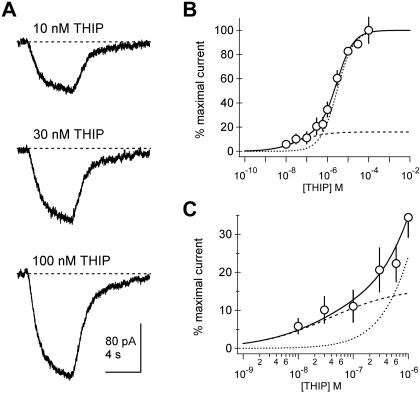Fig. 6.
Human embryonic kidney (HEK) cell recordings also indicate a high-affinity pool of α6β3δ receptors. A: example currents elicited from a HEK-293 cell transfected with α6, β3, and δ cDNA. Currents were easily discriminated at concentrations of THIP as low as 10 nM. B: population concentration-response data indicate a high-affinity component. Each point represents mean ± SEM normalized current amplitude from 8 to 19 cells. The solid line is a fit of a double-component Hill with EC50 of 37 nM and 2.9 μM and slopes (h) of 0.68 and 1.08, respectively. The high-affinity component represents 16% of the population. Curves representing the high-affinity (dashed) and low-affinity (dotted) Hill components are superimposed. C: an expansion of the submicromolar concentration range indicates that responses to the lowest THIP concentrations are systematically larger than those predicted by a single-component Hill relationship.

